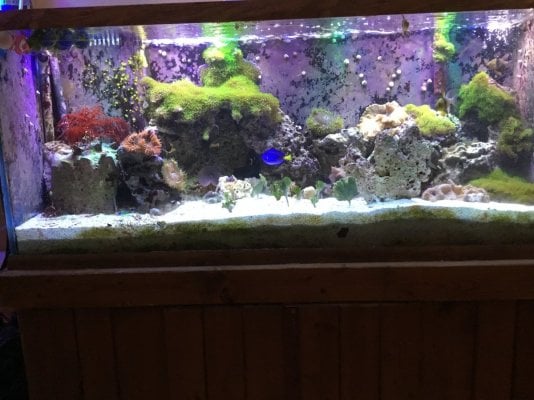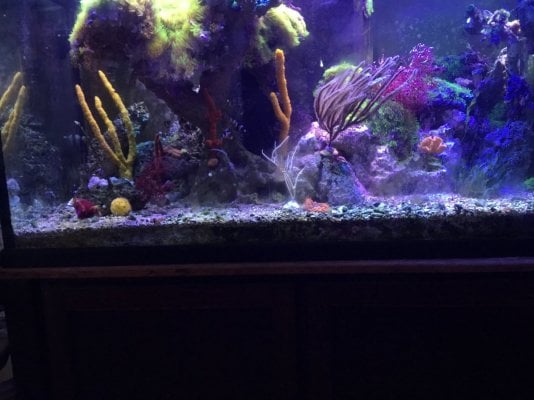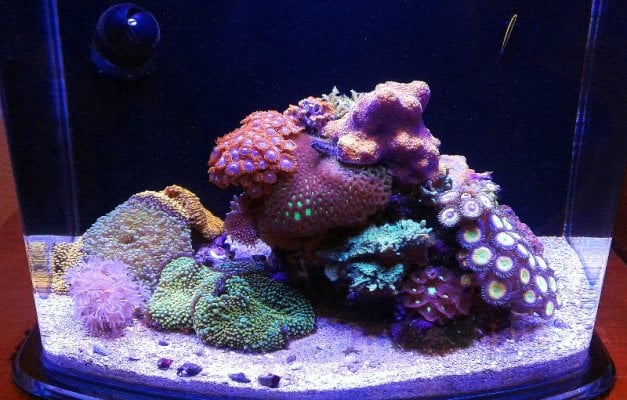Tank: 140 gallons with 40 gallon sump
I plan on a low bio load reef tank with lots of rock and mixed coral. My fish load will be light with reef safe peaceful fish. I don't plan on fish being the main focus but the reef. I would like copepods and bacteria to do most of the work in filtration but I will add and do what I have to do to maintain the corals and diversity of life.
Right now I question the need for a skimmer with what I want to do because I want a more natural approach, if that is possible. This will be an experiment and may not be successful, and I am willing to fail. What I would like to ask this forum is what advice and links you could direct me to that would be most helpful. I just know someone has already tried this before with success so Tanks in advance for any response and helpful links. TanksJB
I plan on a low bio load reef tank with lots of rock and mixed coral. My fish load will be light with reef safe peaceful fish. I don't plan on fish being the main focus but the reef. I would like copepods and bacteria to do most of the work in filtration but I will add and do what I have to do to maintain the corals and diversity of life.
Right now I question the need for a skimmer with what I want to do because I want a more natural approach, if that is possible. This will be an experiment and may not be successful, and I am willing to fail. What I would like to ask this forum is what advice and links you could direct me to that would be most helpful. I just know someone has already tried this before with success so Tanks in advance for any response and helpful links. TanksJB






















